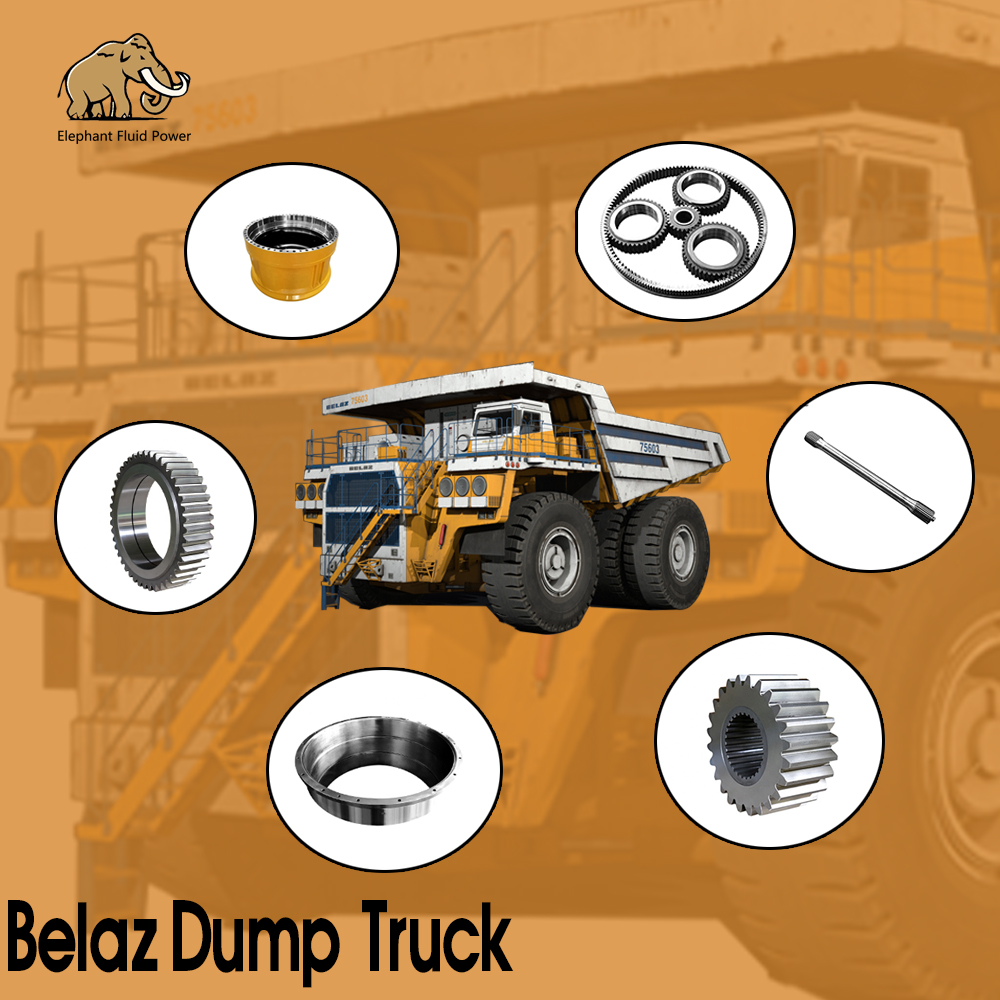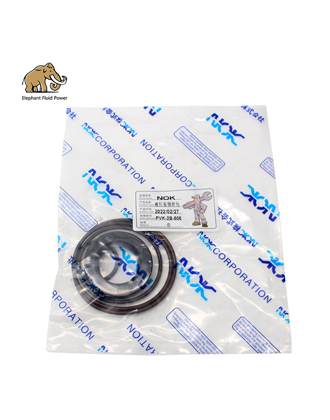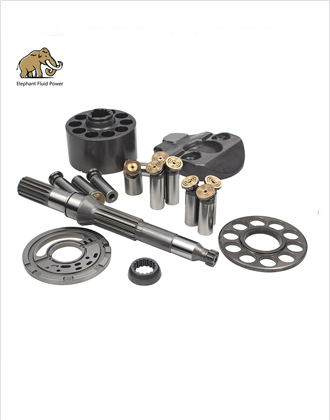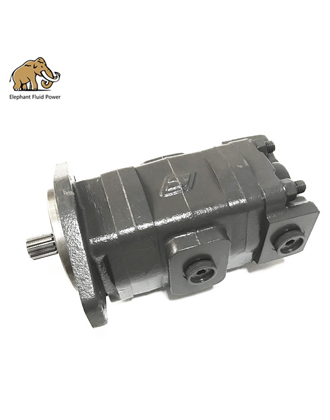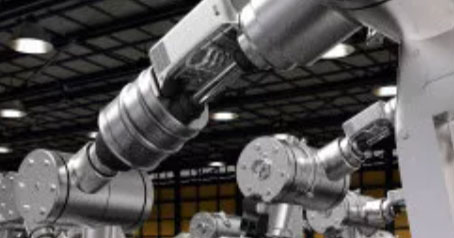Hydraulic vane pumps are workhorses of the industrial world, powering a wide range of machinery and systems. To ensure these pumps operate reliably and efficiently, proper maintenance and care of their components are essential. In this blog, we'll explore the significance of maintaining hydraulic vane pump parts and provide insights into effective maintenance practices.
Importance of Maintenance
Hydraulic vane pumps are subject to continuous stress and wear during operation. Neglecting maintenance can lead to decreased efficiency, increased energy consumption, and even pump failure. Regular maintenance of hydraulic vane pump parts not only extends the pump's lifespan but also contributes to the overall performance and longevity of the hydraulic system it serves.
Key Maintenance Practices
The hydraulic fluid used in the system plays a crucial role in the pump's performance. Regularly monitor fluid levels and ensure they are within the recommended range. Also, check for fluid contamination, as particles and impurities can accelerate wear on pump components. The vanes inside the pump are subjected to repeated sliding and pressure changes. Inspect them for signs of wear, cracks, or distortion. Replace worn-out or damaged vanes promptly to maintain efficient fluid displacement. The cam ring guides the vanes' movement and maintains contact. A worn or damaged cam ring can lead to uneven vane movement and reduced pump efficiency. Regularly inspect the cam ring for signs of wear and replace it if necessary. Seals prevent fluid leakage and maintain proper pressure. Inspect seals for cracks, leaks, or signs of deterioration. Damaged seals should be replaced immediately to prevent fluid loss and pump inefficiency. Hydraulic vane pump parts can generate heat during operation. Ensure that the system's cooling mechanisms are functioning correctly to prevent overheating. Elevated temperatures can lead to degraded pump performance and premature component failure.
Troubleshooting and Problem Solving
Despite regular maintenance, issues with hydraulic vane pump parts can still arise. If you notice a decrease in pump efficiency, inspect the vanes and cam ring for wear. Worn components can lead to fluid leakage and decreased fluid displacement. Strange noises could indicate vane misalignment or worn bearings. Investigate the source of the noise and address it promptly to prevent further damage. Fluid leaks can result from damaged seals or worn components. Identify the source of the leak and replace or repair the affected parts as needed. Inconsistent pressure output may indicate problems with the vanes, cam ring, or seals. Inspect these components and take corrective action to restore proper pressure regulation.
Professional Assistance
While regular maintenance can prevent many issues, some problems may require professional expertise. If you encounter complex or persistent problems with hydraulic vane pump parts, consulting hydraulic system specialists or technicians is recommended. They have the knowledge and tools to diagnose and address challenging issues effectively.
Maintaining hydraulic vane pump parts is essential for the reliable operation of hydraulic systems. By regularly inspecting and caring for components such as vanes, cam rings, seals, and hydraulic fluid, operators can ensure optimal pump performance and extend the system's overall lifespan. Promptly addressing issues through troubleshooting and seeking professional assistance when needed further contributes to the efficient and trouble-free operation of hydraulic vane pumps and the systems they power.
 French
French
 Portuguese
Portuguese
 Russian
Russian
 German
German
 Spanish
Spanish
 Japanese
Japanese
 Korean
Korean
 Irish
Irish
 Greek
Greek
 Turkish
Turkish
 Italian
Italian
 Danish
Danish
 Romanian
Romanian
 Indonesian
Indonesian
 Czech
Czech
 Afrikaans
Afrikaans
 Swedish
Swedish
 Polish
Polish
 Basque
Basque
 Catalan
Catalan
 Esperanto
Esperanto
 Hindi
Hindi
 Lao
Lao
 Albanian
Albanian
 Amharic
Amharic
 Armenian
Armenian
 Azerbaijani
Azerbaijani
 Belarusian
Belarusian
 Bengali
Bengali
 Bosnian
Bosnian
 Bulgarian
Bulgarian
 Cebuano
Cebuano
 Chichewa
Chichewa
 Corsican
Corsican
 Croatian
Croatian
 Dutch
Dutch
 Estonian
Estonian
 Filipino
Filipino
 Finnish
Finnish
 Frisian
Frisian
 Galician
Galician
 Georgian
Georgian
 Gujarati
Gujarati
 Haitian
Haitian
 Hausa
Hausa
 Hawaiian
Hawaiian
 Hebrew
Hebrew
 Hmong
Hmong
 Hungarian
Hungarian
 Icelandic
Icelandic
 Igbo
Igbo
 Javanese
Javanese
 Kannada
Kannada
 Kazakh
Kazakh
 Khmer
Khmer
 Kurdish
Kurdish
 Kyrgyz
Kyrgyz
 Latin
Latin
 Latvian
Latvian
 Lithuanian
Lithuanian
 Luxembourg
Luxembourg
 Macedoniar
Macedoniar
 Malagasy
Malagasy
 Malay
Malay
 Malayalam
Malayalam
 Maltese
Maltese
 Maori
Maori
 Marathi
Marathi
 Mongolian
Mongolian
 Burmese
Burmese
 Nepali
Nepali
 Norwegian
Norwegian
 Pashto
Pashto
 Persian
Persian
 Punjabi
Punjabi
 Serbian
Serbian
 Sesotho
Sesotho
 Sinhala
Sinhala
 Slovak
Slovak
 Slovenian
Slovenian
 Somali
Somali
 Samoan
Samoan
 Scots Gaelic
Scots Gaelic
 Shona
Shona
 Sindhi
Sindhi
 Sundanese
Sundanese
 Swahili
Swahili
 Tajik
Tajik
 Tamil
Tamil
 Telugu
Telugu
 Thai
Thai
 Ukrainian
Ukrainian
 Urdu
Urdu
 Uzbek
Uzbek
 Vietnamese
Vietnamese
 Welsh
Welsh
 Xhosa
Xhosa
 Yiddish
Yiddish
 Yoruba
Yoruba
 Zulu
Zulu

